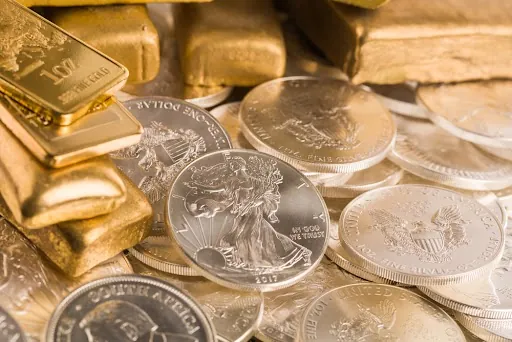In a world the cheapest place to buy gold coins monetary stability often feels elusive, gold has remained a timeless image of wealth and safety. As economies fluctuate and currencies face uncertainty, the allure of gold continues to attract patrons and sellers alike. This text delves into the intricate world of gold sellers, exploring their role within the marketplace, the challenges they face, and the evolving traits shaping this age-previous trade.
Gold sellers are available numerous types, ranging from local jewelers and pawn shops to massive-scale bullion dealers silver and gold online marketplaces. Every seller operates within a unique niche, catering to diverse customer needs. Local jewelers usually concentrate on handcrafted pieces, providing personalised providers and customized designs that attraction to these seeking distinctive jewellery. In distinction, pawn shops present a fast and accessible means for individuals to buy gold commodity online or sell gold objects, often at decrease prices than conventional retailers.
The rise of on-line platforms has transformed the gold selling panorama, allowing shoppers to buy gold and silver online and promote gold with just some clicks. Websites dedicated to gold buying and selling have gained recognition, providing aggressive prices and convenience. However, this shift has also introduced challenges, akin to issues over scams and the authenticity of products. As a result, many customers remain cautious and prefer to deal with established native sellers who can present a sense of trust and reliability.
One of many most important challenges dealing with gold sellers right now is fluctuating gold costs. Gold is a commodity that’s traded on world markets, and its price can vary considerably from day to day. Sellers must keep informed about market trends and alter their pricing strategies accordingly. For instance, throughout intervals of financial uncertainty, gold costs often rise as buyers flock to the protected-haven asset. Conversely, when the economic system stabilizes, prices could decline, impacting sellers’ profit margins.
Moreover, the COVID-19 pandemic has had a profound impact on the gold market. In 2020, as international economies confronted unprecedented challenges, gold prices soared to record highs. Many sellers capitalized on this surge, attracting new customers desperate to invest in gold as a hedge against financial instability. Nonetheless, the pandemic also disrupted provide chains, making it tough for some sellers to supply gold and meet demand. As the world regularly recovers, sellers are actually navigating a new landscape, adapting to altering consumer behaviors and preferences.
Sustainability and moral sourcing have additionally emerged as crucial issues within the gold selling trade. Consumers are increasingly concerned about the environmental and social impacts of gold mining, leading to a demand for responsibly sourced materials. Sellers are responding by searching for out suppliers who adhere to ethical practices, ensuring that their gold is sourced from mines that prioritize environmental protection and fair labor practices. This shift not only helps sellers meet consumer expectations but additionally enhances their model status.
Along with moral issues, technological advancements are reshaping the gold selling trade. Improvements comparable to blockchain know-how are being explored to enhance transparency and traceability in gold transactions. By using blockchain, sellers can present customers with proof of authenticity and the origin of their gold merchandise, addressing considerations over counterfeit items and unethical sourcing. As expertise continues to evolve, gold sellers should remain agile, embracing new instruments and platforms to remain competitive in the marketplace.
Despite the challenges, the gold selling business stays resilient, with many sellers finding revolutionary methods to thrive. For instance, some jewelers are diversifying their choices by incorporating different materials and designs into their collections, interesting to a broader audience. Others are leveraging social media and e-commerce to reach new prospects, showcasing their products by means of visually interesting content and interesting online campaigns.

The future of gold selling is more likely to be shaped by a mixture of conventional practices and modern improvements. As shoppers turn out to be more informed and discerning, sellers should prioritize transparency, sustainability, and customer experience. Constructing trust and fostering relationships with customers will probably be important for lengthy-term success on this competitive panorama.
In conclusion, gold sellers play a significant position in the financial system, offering customers with entry to this treasured metallic while navigating a posh and ever-changing market. From native jewelers to on-line platforms, the trade is evolving to meet the calls for of a new era of patrons. As gold continues to shine as a symbol of wealth and security, sellers must adapt to the challenges and alternatives that lie forward, ensuring that they stay relevant in a world the place the worth of gold is as dynamic because the market itself.
